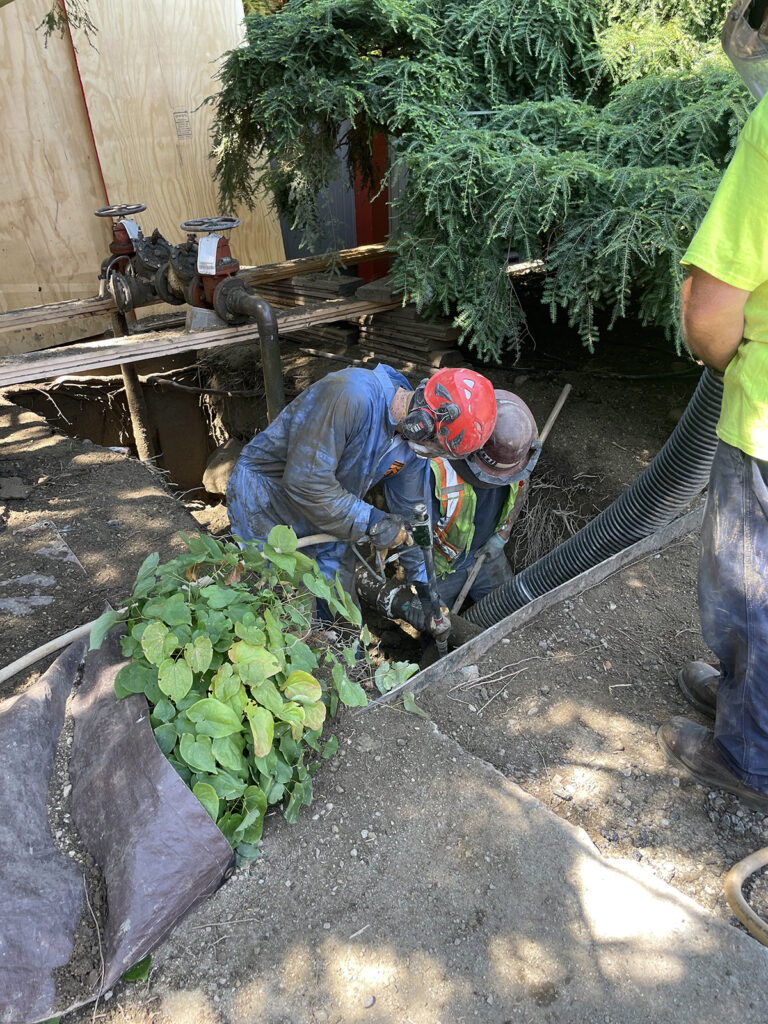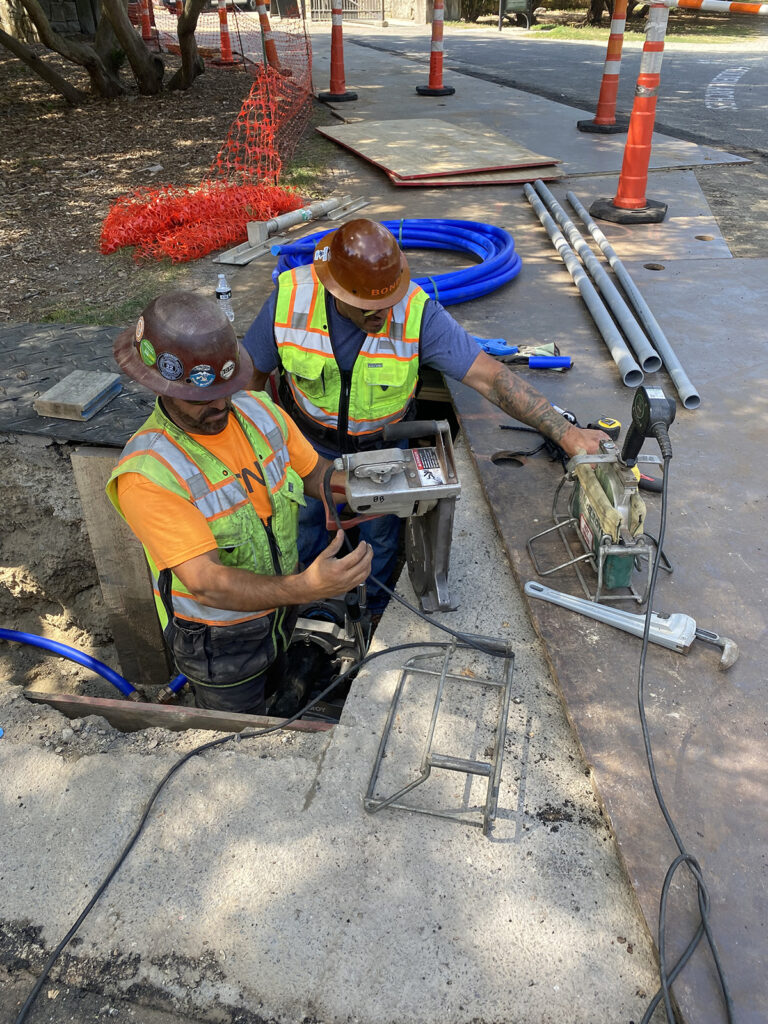Final phase of installing emergency irrigation infrastructure in the Arboretum landscape launched this summer
This summer, the Arnold Arboretum of Harvard University continues its ambitious and essential work to protect its living collections from the growing threat of prolonged summer droughts. With the launch of a third phase of a multi-year initiative for emergency drought mitigation, the Arboretum is advancing its commitment to sustainability and stewardship of its plant collections in response to climate change.
New England has endured increasingly frequent and severe droughts in recent years—most notably in 2016, 2020, 2022, and 2024. Extremely dry conditions and the threat of their repetition over multiple growing seasons pose a serious risk to the Arboretum’s globally renowned plant collections, which include more than 16,000 accessioned specimens, many of conservation concern. For mature trees in particular, drought stress can compound the effects of other plant health issues including damage incurred by pests and disease. In response, the Arboretum launched construction of a comprehensive network of emergency irrigation systems across its 281 acres, designed to ensure that the living collections receive adequate hydration during extremely dry stretches of weather in Boston.
The initiative began with the Centre Street Irrigation Project, which came online in April 2020. This first phase of donor-supported work covered 30 acres of critical collections, including oaks, viburnums, hickories, and the Explorers Garden on Bussey Hill. Since then, additional philanthropy has enabled the Arboretum to expand its water infrastructure significantly. By the end of the initiative’s second phase in 2024—which centered on the Peters Hill landscape, perhaps the most challenging part of the Arboretum to hydrate due to its topography—advanced irrigation systems covered some 140 acres, benefiting nearly 8,000 plants or about half of the Arboretum’s total holdings.

The third phase launched in July builds on this momentum with a focus on both infrastructure upgrades and strategic expansion. One of the cornerstone efforts this summer is the replacement of the aging and inadequate domestic water service to the Dana Greenhouses (DGH) on Centre Street. The connection of a new, up-sized water line from Boston Water & Sewer will provide increased capacity and reliability. Inside the greenhouses, plumbing systems are being redesigned to streamline water distribution, ensuring consistent hydration for plant production activities, nursery stock, greenhouse collections, the Leventritt Garden of Shrubs and Vines, the Bradley Rosaceous Collection, and the Bonsai Pavilion. Substantial completion of work at the DGH is expected by September 19.
Additional construction this summer is leveraging the capacity of the new pump station established on Peters Hill in 2023, extending water access across Flora Way and into the collections along Hemlock Hill Road and beyond. This pipeline will support irrigation across an additional 60 acres of the Arboretum, including nationally accredited collections of maples, hemlocks, and beeches, as well as cork trees, lindens, horse chestnuts, and tulip trees, as well as the azaleas, rhododendrons, and mountain laurels adorning the foot of Hemlock Hill. Work at the Peters Hill and Flora Way entrances to extend water service from the Peters Hill pump station should be completed by early September.

Build-out of additional irrigation systems facilitated by these enhancements are anticipated in 2026 pending additional donor funding. Once this final phase is complete, the Arboretum will have a fully integrated irrigation system capable of reaching all areas of the landscape—either through in-ground systems or portable irrigation solutions. As with other phases of the project, irrigation lines added in this phase will be automated to allow for off-hour delivery during dry spells, increasing the efficacy of absorption and incurring less disruption to horticulture work and public visitation.
Next year’s anticipated completion of the Arboretum’s comprehensive Drought Mitigation Initiative will mark a transformative moment for the living collections. By proactively investing in drought preparedness with the financial backing of generous and foresighted donors, the Arboretum is protecting its invaluable collections while modeling responsible environmental stewardship in the face of a rapidly changing climate.
